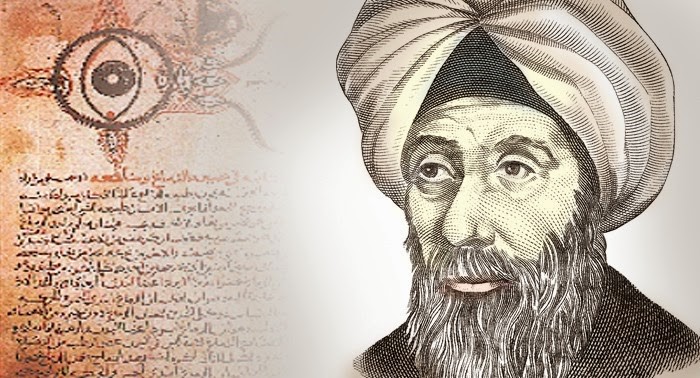The Islamic scholar who solved the secrets of light six centuries before the West: Who is Ibn al-Haytham?
Before Ibn al-Haytham, westerners believed that human beings see objects with rays coming out of the eye.

Roger Bacon, one of the western cavalrymen of optics, who is also a philosopher, sought to surpass him by accepting him as his master. His Kitab-ül Menazir (Treasure of Optics), which he wrote about light, first illuminated the east and then the west through translations, and shed light on the knights of knowledge such as Bacon and Witello.
Ḥasan Ibn al-Haytham, Latinized as Alhazen (965 – c. 1040), was a medieval mathematician, astronomer, and physicist of the Islamic Golden Age from present-day Iraq.
This Islamic scholar, who rose from the east and illuminated the west, was none other than Abu Ali al-Hasen ibn-Haysem, known to Westerners as Alhazen. Heytham, one of the greatest Islamic physicists of the Middle Ages, was born in Basra, went to Baghdad, and achieved mastery in the fields of mathematics, physics, engineering, and astronomy. Although it is claimed that Heysem's research on light, which pushed the limits of philosophy with the distance he covered in optics and then in mathematics, led him to skepticism, no data confirming this has been reached. On the contrary, he is known to be a devout Muslim, and he argued that it would be beneficial to adopt a skeptical approach when it comes to science.
If you ask what made Haytham so valuable and the subject of books almost a thousand years after his death; In response, we can say that it is the name that first opened the 'eyes of man' in relation to the sense of light and sight. Yes, Heytham opposed the belief that we see objects when the light leaves our eyes and goes to the objects, as was believed until that day, on the contrary, he put forward the idea that we see them when the light reflected from the objects comes to our eyes. He was also the one who made the first scientific descriptions of the eye. Moreover, his work was not limited to this. He made groundbreaking studies on the refraction of light in the air, carried out scientific studies on vision with one and both eyes, and was the first to implement the idea of using a dark room for studies on the light.
Heytham had developed striking ideas about gravity and the condensation of air. Bringing the atmosphere layer into his wide range of interest, Heysem also tried to calculate the thickness of the atmosphere surrounding our globe; He also found that the Sun and Moon appear larger than normal when they are close to the horizon due to the effect of the atmosphere. In addition, our scholar, who examined the relationship between the weight and density of the atmosphere and their effect on the weight of substances, discovered that the density of air was directly proportional to the refraction of light and that this density changed with altitude. Our scholar, who also tried to build a bridge between geometry and logic, developed the geometric and numerical applications of Euclid and Apollonius and shed light on how they can be applied in daily life as well as in construction.
After al-Haytham, many opticians, especially the Polish scientist Witello, tried to open new pages in this field, but none of them could reach findings that went beyond his work.
Heysem, who broke new ground in scientific methods and optics with his discoveries, was undoubtedly one of the leading scholars not only of the Islamic world but also of the Middle Ages. With his findings and especially his observations based on experiments, he illuminated the world of science for six centuries. Because of his contributions to the history of science, some consider the scientific method he developed as the most important scientific development of the second millennium. For example, Nobel Prize-winning physicist Abdus Salem said, “Heysem is one of the most important physicists of all time. With his experimental contributions in optics, he raised the bar to the highest level and became a lighthouse for scholars such as Fermat, Newton, and Roger Bacon.” Then, science historian George Sarton put the last point about the master by saying, “Heysem is not only the most important scientist of the Islamic world but in any case the entire Middle Ages” in his book Introduction to the History of Science.
